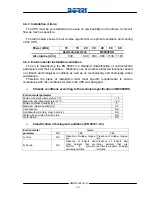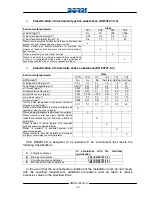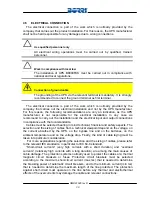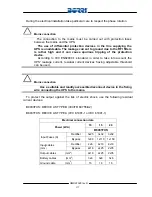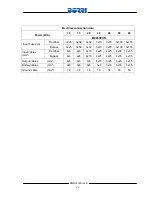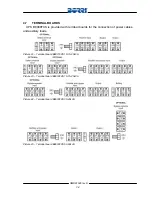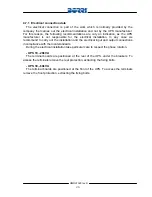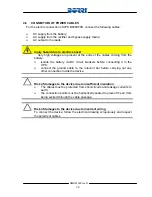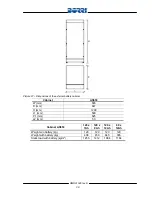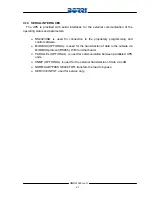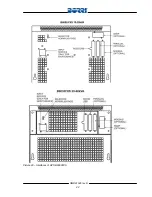
OMD91046 rev D
30
4.5
ELECTRICAL CONNECTION
The electrical connection is part of the work which is normally provided by the
company that carries out the product installation. For this reason, the UPS manufacturer
shall not be held responsible for any damages due to wrong connections.
Use qualified personnel only
All electrical wiring operations must be carried out by qualified, trained
personnel.
Work in compliance with local law
The installation of UPS B8000FXS must be carried out in compliance with
national and local regulations.
Connection of ground cable
The grounding of the UPS via the relevant terminal is mandatory. It is strongly
recommended to connect the ground terminal as first terminal.
The electrical connection is part of the work which is normally provided by the
company that carries out the electrical installation and not by the UPS manufacturer.
For this reason, the following recommendations are only an indication, as the UPS
manufacturer is not responsible for the electrical installation. In any case we
recommend to carry out the installation and the electrical input and output connections
in compliance with the local standards.
Cables must be selected bearing in mind technical, financial and safety aspects. The
selection and the sizing of cables from a technical viewpoint depend on the voltage, on
the current absorbed by the UPS, on the bypass line and on the batteries, on the
ambient temperature and on the voltage drop. Finally, the kind of cable laying must be
taken into particular consideration.
For more explanations regarding the selection and the sizing of cables, please refer
to the relevant IEC standards, in particular to IEC 64-8 standard.
“Short-circuit currents” (very high currents with a short duration) and “overload
currents” (relatively high currents with a long duration) are among the main causes of
cable damage. The protection systems normally used to protect the cables are: thermal
magnetic circuit breakers or fuses. Protection circuit breakers must be selected
according to the maximum short-circuit current (max Isc) that is needed to determine
the breaking power of automatic circuit breakers, and to the minimum current (min Isc)
that is needed to determine the maximum length of the line protected. The protection
against short-circuit must operate on the line before any thermal and electrothermal
effects of the overcurrents may damage the cable and relevant connections.













